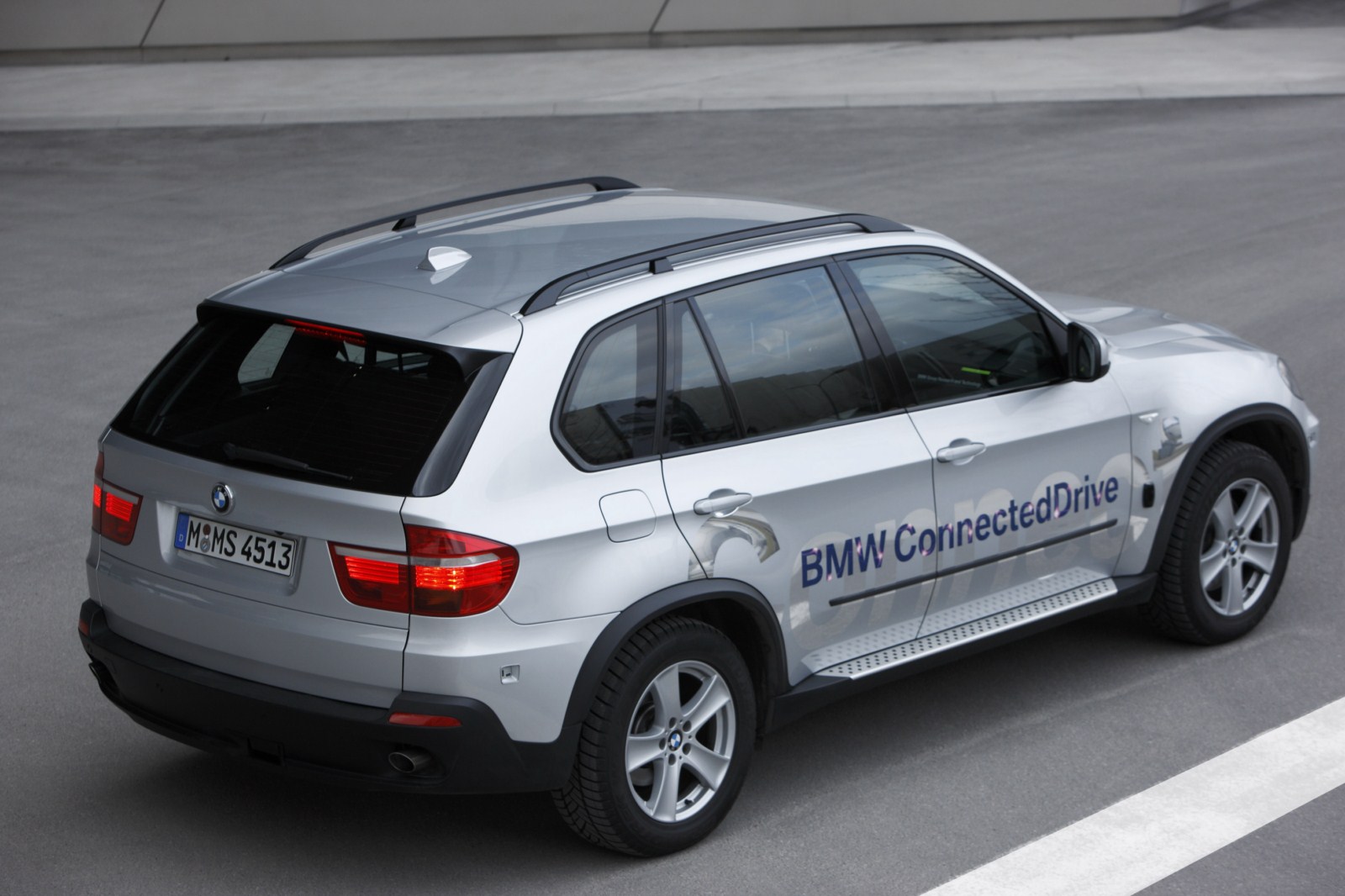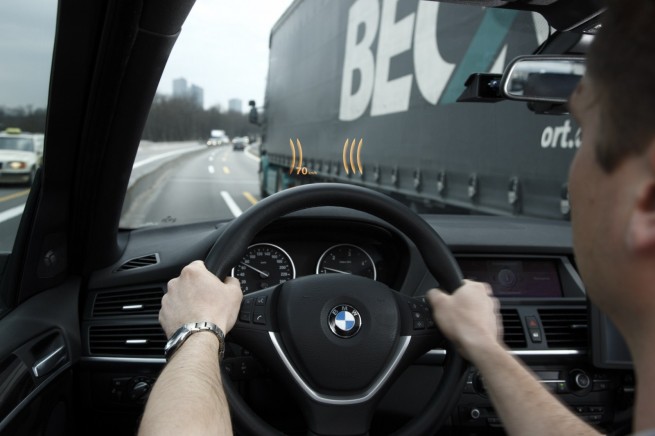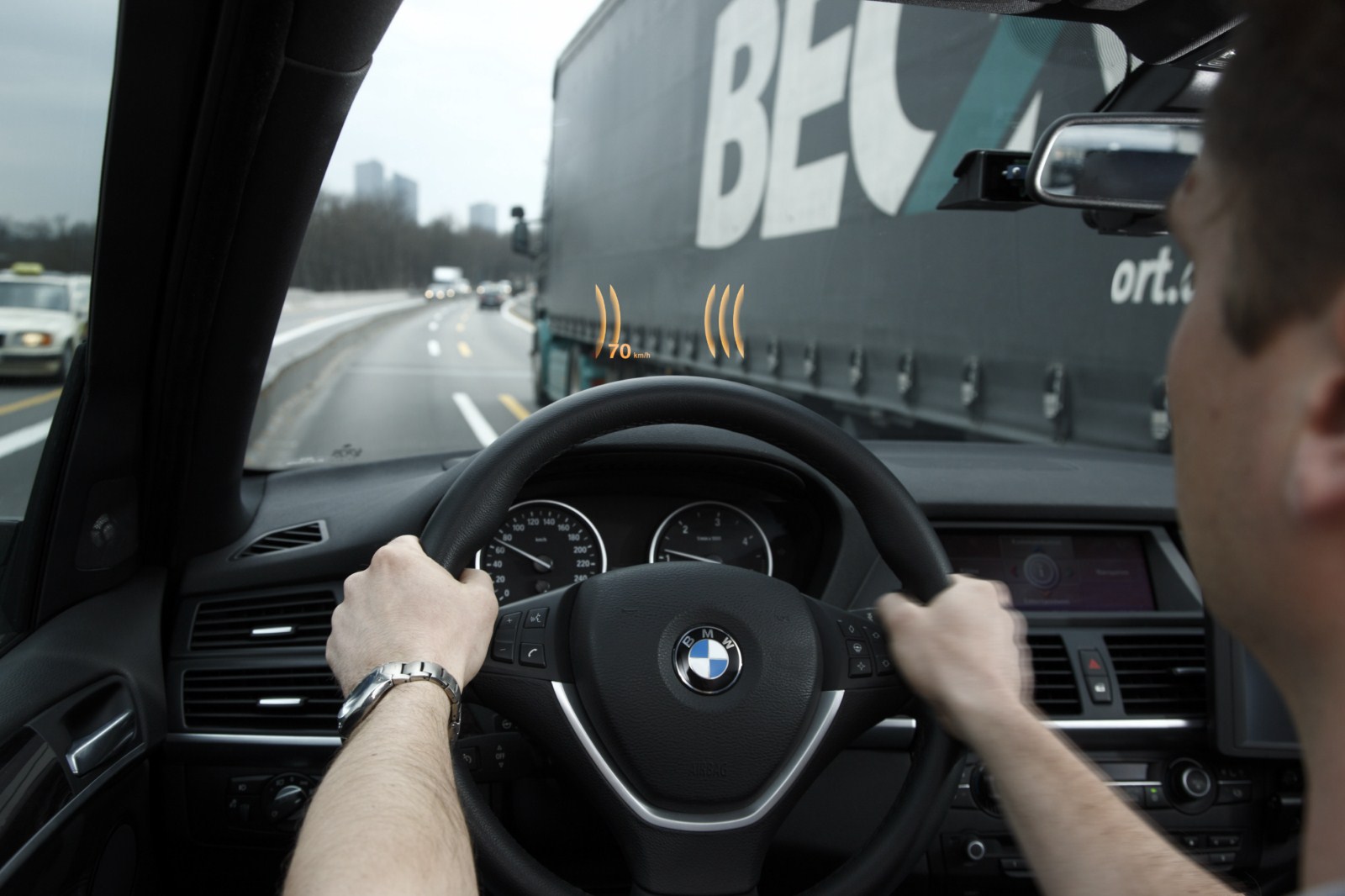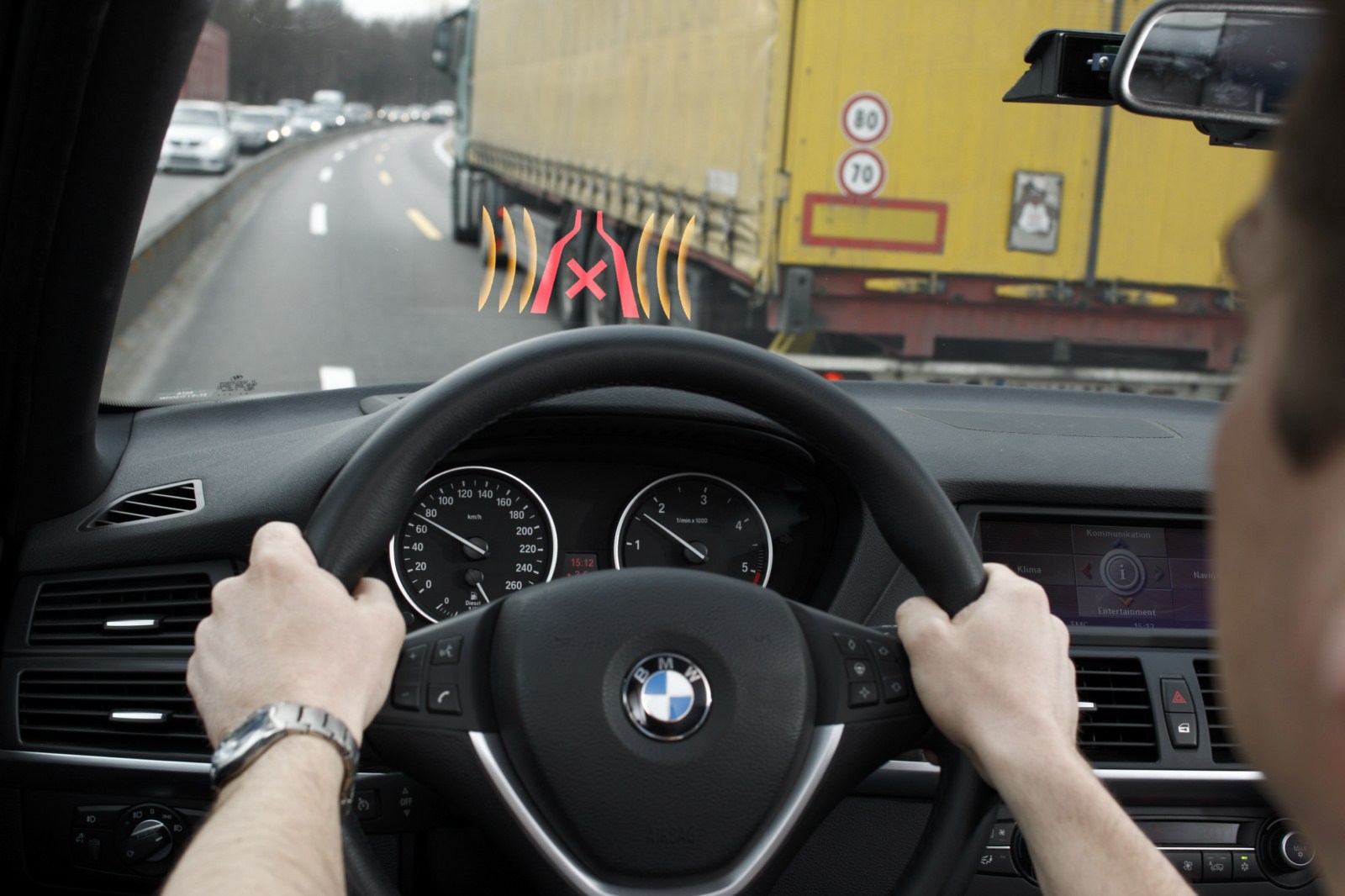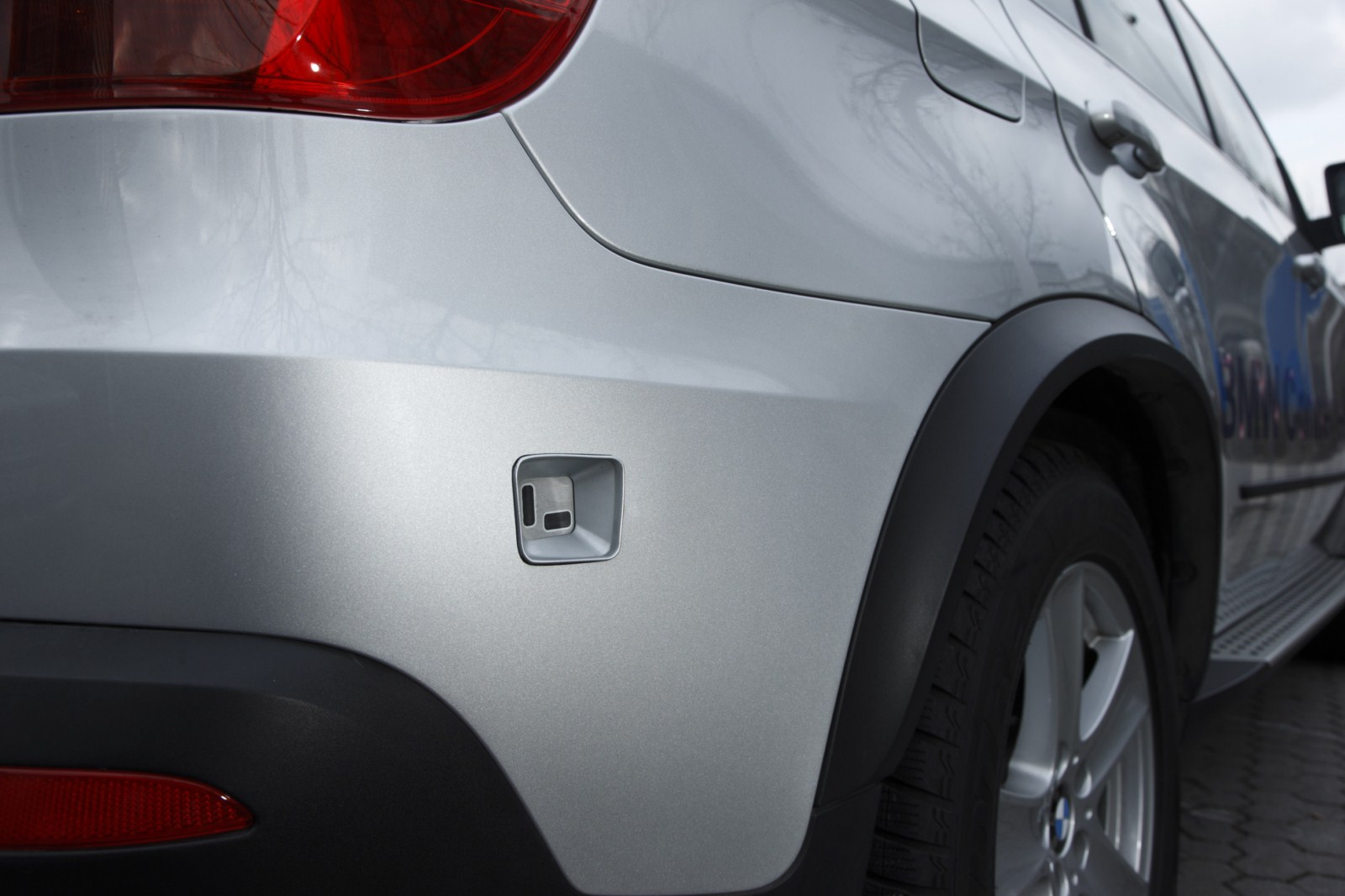In the lengthy press release issued yesterday by BMW around the 25th anniversary of the BMW Forschung und Technik GmbH, one important innovation sneaked in and missed it the first time: BMW narrow-passage assistant, a system that assists drivers if they are driving along particularly narrow lanes, for example near building works, and the emergency stop assistant which brings the vehicle safely to a stop if there is a medical emergency.
The so-called narrow-passage assistant will be premiered in public to celebrate the 25th landmark birthday of BMW Forschung und Technik GmbH. The system enhances driver control when traveling along particularly narrow lanes. It helps drivers to correctly assess a narrow passage in advance – for example when they are driving through building works – keep to their line precisely when they are driving through the narrow passage, and maintain the optimum safety gap on both sides.
The narrow-passage assistant uses a laser scanner which measures the area in front of the vehicle, and ultrasonic sensors that estimate the lateral gap to obstacles such as crash barriers or other vehicles. The data collected is pooled and an overall picture is generated that is then transmitted to the driver. This makes it easier for the driver to assess the situation on the road before entering the narrow passage or to keep on course while driving through.
In everyday traffic, the narrow passage assistant can be used while driving through motorway building works where two parallel lanes are allocated for traffic traveling in one direction but drivers have to concentrate very carefully because of the reduced width. Overtaking manoeuvres present a particularly difficult challenge. The narrow-passage assistant helps the driver to assess whether safely overtaking a truck driving in the other lane is feasible. If there is not enough room in the driver’s own lane in order to carry out the manoeuvre without risk, the driver is given a warning in advance. If the lane is sufficiently wide, the driver also receives instructions while he is overtaking that enable him to keep the ideal gap on both sides. The available gap on both sides is indicated in the Head-up Display with circular symbols. As soon as the gap to the crash barrier or the vehicle in the parallel lane has become reduced beyond a defined dimension, a brief steering pulse is given. If the driver accepts this information, the vehicle returns to the optimum trajectory.
When they were developing the narrow-passage assistant, the specialists at BMW Forschung und Technik optimised data recording using sensor systems and laser scanners as well as enhancing the evaluation of the information gathered in this way. The ideal way of communicating instructions for action to the driver was also analyzed down to the last detail. Comprehensive usability tests using a drive simulator indicated that the combination of optical signals and a brief steering pulse were the most effective method of providing support for the driver in carrying out the manoeuvre.
These tests are now also being carried out on cordoned-off roads – in a BMW X5 technology platform structured especially for this purpose.


